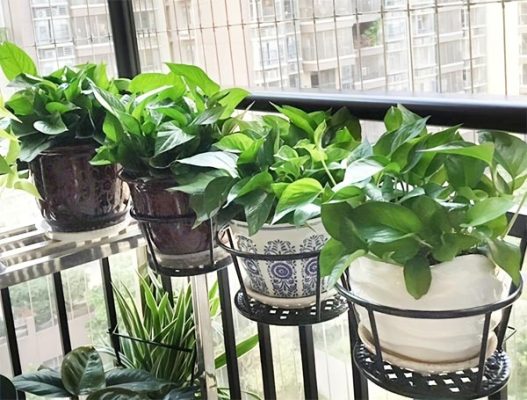
Green Balcony Bliss: Elevate Your Space with These Simple Tips for Plant Care
Your balcony is more than just an extension of your living space; it’s an opportunity to create a serene oasis amidst the hustle and bustle of daily life. With the right care and attention, your balcony can transform into a lush green haven that not only enhances the aesthetic appeal of your home but also contributes to your overall well-being. In this blog, we’ll explore simple yet effective tips for caring for the plants on your balcony, helping you create a thriving and vibrant outdoor sanctuary.
Elevate Your Space with These Simple Tips for Plant Care
- Choose the Right Plants
- Provide Adequate Sunlight
- Water Wisely
- Use Quality Potting Soil
- Fertilize Regularly
- Prune and Deadhead
- Protect from Pests and Diseases
- Rotate and Refresh
Choose the Right Plants:
Before diving into care tips, it’s essential to select the right plants for your balcony environment. Consider factors such as sunlight exposure, climate, and available space. Opt for plants that thrive in your region and are suitable for the amount of sunlight your balcony receives. Additionally, choose plants that complement each other in terms of height, color, and texture to create a visually appealing display.
Also Read This : Beat the Heat: The Crucial Role of Mulching in Summer Gardening
Provide Adequate Sunlight:
Most plants require adequate sunlight to thrive, so ensure that your balcony receives sufficient sunlight throughout the day. Observe the patterns of sunlight and shade on your balcony and position your plants accordingly. South-facing balconies typically receive the most sunlight, while north-facing balconies may be shadier. Adjust the placement of your plants as needed to ensure they receive the optimal amount of sunlight for healthy growth.

Water Wisely:
Proper watering is crucial for the health of your balcony plants. The frequency and amount of water needed will vary depending on factors such as plant type, weather conditions, and soil drainage. As a general rule, water your plants when the top inch of soil feels dry to the touch. Avoid overwatering, as this can lead to root rot and other issues. Use a watering can or hose with a gentle spray nozzle to water your plants evenly, ensuring thorough saturation without waterlogging the soil.
Also Read This : Transforming Waste into Garden Gold: Top 7 Kitchen Scraps for Thriving Gardens
Use Quality Potting Soil:
The soil you use can significantly impact the health and growth of your balcony plants. Choose a high-quality potting mix that is well-draining and nutrient-rich. Avoid using garden soil, as it may compact in containers and hinder root growth. Consider mixing in compost or organic matter to improve soil structure and fertility. Regularly replenish the soil in your pots to provide your plants with the nutrients they need for optimal growth.
Fertilize Regularly:
In addition to nutrient-rich soil, balcony plants may benefit from regular fertilization to support healthy growth and flowering. Choose a balanced, water-soluble fertilizer specifically formulated for container plants. Follow the instructions on the label carefully, as over-fertilizing can harm your plants. Apply fertilizer during the growing season, typically spring through fall, to provide your plants with the nutrients they need to thrive.
Also Read This : Discovering the Best Plants for Vertical Gardening
Prune and Deadhead:
Regular pruning and deadheading can help keep your balcony plants looking neat and tidy while promoting new growth and flowering. Remove dead or yellowing leaves, spent flowers, and any overgrown or leggy stems. Use clean, sharp pruning shears to make precise cuts, taking care not to damage the healthy parts of the plant. Pruning encourages branching and stimulates new growth, resulting in fuller, bushier plants.

Protect from Pests and Diseases:
Keep an eye out for pests such as aphids, mealybugs, and spider mites, which can infest balcony plants and cause damage if left unchecked. Inspect your plants regularly for signs of pest infestation, such as discolored or distorted leaves, sticky residue, or webbing. If you notice any pests, treat the affected plants promptly with insecticidal soap or neem oil, taking care to follow the instructions on the product label. Additionally, practice good sanitation by removing fallen leaves and debris, which can harbor pests and disease pathogens.
Also Read This : Double Your Balcony Garden Growth with These Expert Hacks
Rotate and Refresh:
Periodically rotate the position of your balcony plants to ensure balanced growth and prevent uneven sun exposure. This also gives you the opportunity to inspect your plants from all angles and address any issues such as pests or disease. Additionally, consider refreshing your balcony display seasonally by swapping out tired or spent plants for new additions. Experiment with different combinations of plants, colors, and textures to keep your balcony looking fresh and inviting year-round.
Also Read This : Maximize Your Garden Space: 10 Vegetables Perfect for Small Gardens!
With these simple tips for plant care, you can transform your balcony into a green oasis that enhances your outdoor living space and uplifts your mood. By choosing the right plants, providing adequate sunlight and water, and practicing regular maintenance, you can create a thriving balcony garden that brings joy and tranquility to your home. Embrace the beauty of nature right outside your door and experience the bliss of a green balcony retreat.




